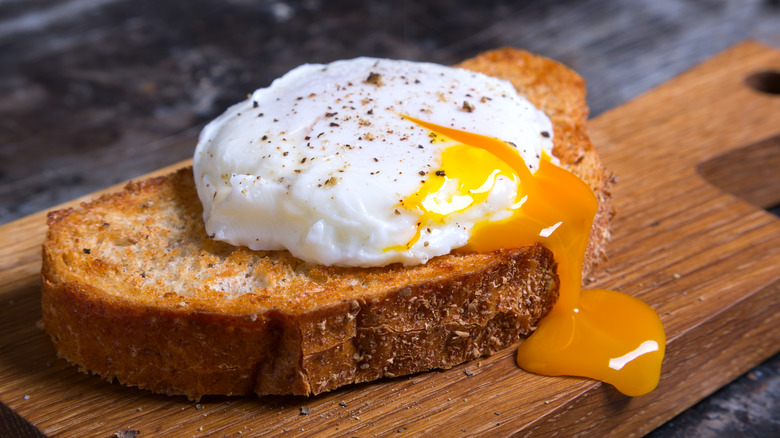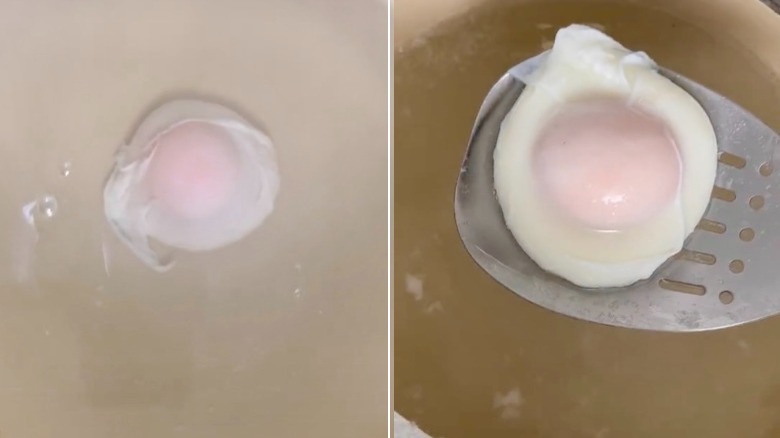The Water-Swirling Technique For Perfect Poached Eggs Every Time
The incredible edible egg has seen its share of PR issues over the past few decades. Called "public enemy number one for the heart" in the 1960s and 70s due to their high amount of dietary cholesterol, eggs are once again welcome in a healthy diet, per The Washington Post.
The high-protein, low-calorie egg can be prepared in many ways, scrambled, hard-boiled, soft-boiled, fried, over easy, sunny side up, and poached, not to mention as an omelet, frittata, or tortilla making eggs a dish everyone can make and a versatile meal choice any time of day. According to The American Journal of Clinical Nutrition, one-quarter of Americans skip breakfast, with 28% of men leading the charge, citing a busy schedule or running late in the morning as excuses, per HuffPost.
The nutritional quality of an egg is influenced by the chicken's diet, how the chicken is raised, and the cooking method, with pasture-raised and organic eggs being more nutritional than caged eggs. Cooking an egg makes its protein easier to digest, allowing 91% of the protein in cooked eggs to be digestible versus 51% in raw eggs. However, high heat and longer cooking times can damage some nutrients, reducing the amount of vitamin A and antioxidants in the egg (per Healthline).
While each cooking method can produce a delicious meal, hard-boiled and poached eggs contain no added fat or calories, making them an excellent choice if you're looking for nutritious options. For a perfectly poached egg, try this simple technique.
A beautifully poached egg
Poaching involves gently cooking an egg in simmering water until the white is set and the yolk remains runny. If done correctly, a poached egg is a delicious, tightly wrapped package with the white encasing the yolk in an elegant presentation. Poached eggs are traditionally served for brunch in Eggs Benedict, where they're placed on toast and covered in rich hollandaise sauce.
According to Michelin-starred chef and TikTok user Paul Foster, the secret to a perfectly poached egg is stirring the water in a circular motion just as it's about to boil before gently adding the egg. Foster explains that the stir stops the egg from clinging to the pan's bottom, enabling the whites to set and fold over the yolk, enveloping it.
Using the freshest eggs available, Foster begins by cracking a room-temperature egg into a colander to allow the stringy parts of the white to strain. Egg whites become more fluid as eggs age, creating wispy stragglers when poached. Straining the egg first eliminates that issue, so save the older ones for preparing hard-boiled eggs. Cook the egg for two to two-and-a-half minutes, looking for the white to be set but the yolk warm and runny. Drain the poached egg on a paper towel using a slotted spoon before plating and seasoning.
According to MasterClass, chefs like Thomas Keller add one-quarter cup of white vinegar to the simmering water to keep the whites in place. Instead, Foster used the colander to avoid the vinegary taste of the poaching liquid. While you should keep plenty of space between the eggs, you can poach a few eggs at once.

